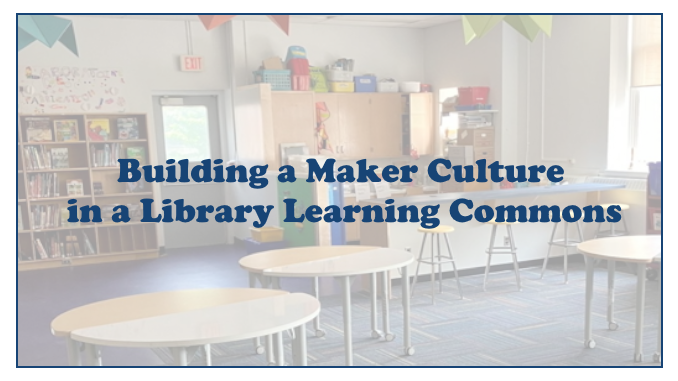
By Victoria Roucaud
Starting Out
The makerspace and Library Learning Commons (LLC) are intertwined. I could not write about our makerspace without first emphasizing the importance of establishing an LLC. In this article, I will discuss how to foster a maker culture in a school. I will start by presenting the shift from library to LLC.
When I walked into the teacher-librarian (TL) role and discovered the library space, I knew that there was an ambitious road ahead. This was the first “normal” post pandemic school year. Students were finally returning to school after several months of remote learning. School libraries had undergone closures for close to two years and teacher-librarians had been redirected during the closures due to pandemic restrictions. I cannot say that the library space I walked into was at its best. This was, of course, no one’s fault in particular. The library had just been neglected and unfortunately turned into a bit of a storage space and junkyard during the closure. During my first visit I stood in the space taking it all in and scratching my head for where to start. It felt like a huge feat. I was motivated and passionate about realizing the LLC and makerspace vision, and shifting the space from library to LLC on the Leading Learning Continuum.
Let me paint you a picture of what I walked into. The space was cluttered with boxes of books (old and new), random tech, and broken furniture. The space felt cramped and the layout was static. There were two sides to our library: the English side and the French side (as our school is dual track). One half of the library (the French side) was completely taken up by immovable tables connected to electrical wall panels with at least 30 dusty old desktops locked on top. There were dozens of binders filled with printed subscription magazines blocking at least two full shelves. The carpet was drab, buckling, and a bit of a tripping hazard. I had a solid idea of what I wanted the space to become: book displays that reflect students’ interest, while also promoting TDSB Heritage Months and Dates of Significance; reading nooks; flexible furniture and learning areas; a designated makerspace; colourful student-made signage; a place for reading, thinking, collaborating and more. During my summer, I networked with other teacher-librarians and built on my PLN (I gained inspiration from so many amazing educators and TLs out there). At the same time, I planned out how I wanted to reconfigure the space to promote and create a welcoming, flexible, and collaborative learning environment for our students. Leading up to this new role, I also joined new TL online networking workshops, as well as connected with teacher, author, speaker, and inquiry consultant, Trevor Mackenzie, who offered some great tips in support of my vision jumping into this role. I spoke with him again to share some of his insights for this article.
After clearing the space, I started making progress towards my goal of creating a designated makerspace, as well as embracing the LLC model by creating STEAM tubs with consumables (e.g., stacking cups for building structures, print-outs and markers for mindful colouring, etc.). Through all my sifting, I unearthed some robotics and realized we had the makings of a handsomely stocked makerspace. I uncovered robot mice, dashbots, ozobots, and lego bots. These all got their place in the newly designated makerspace corner and shelves. Once the LLC was open to welcome students back in, they made LLC signage and a makerspace sign. When discussing the role that the learning environment, space, and design play in inquiry and student-centered learning, Mackenzie (2023) explains that we must ask questions about how “student curiosities, questions, and processes towards learning are evidenced in the design of our space.” It was important to me that the LLC reflect our students as this was their space and a learning hub for the entire school. These were the humble beginnings of our LLC and makerspace on the Leading Learning continuum. On the Leading Learning continuum, we went from emerging/exploring to evolving quite quickly.
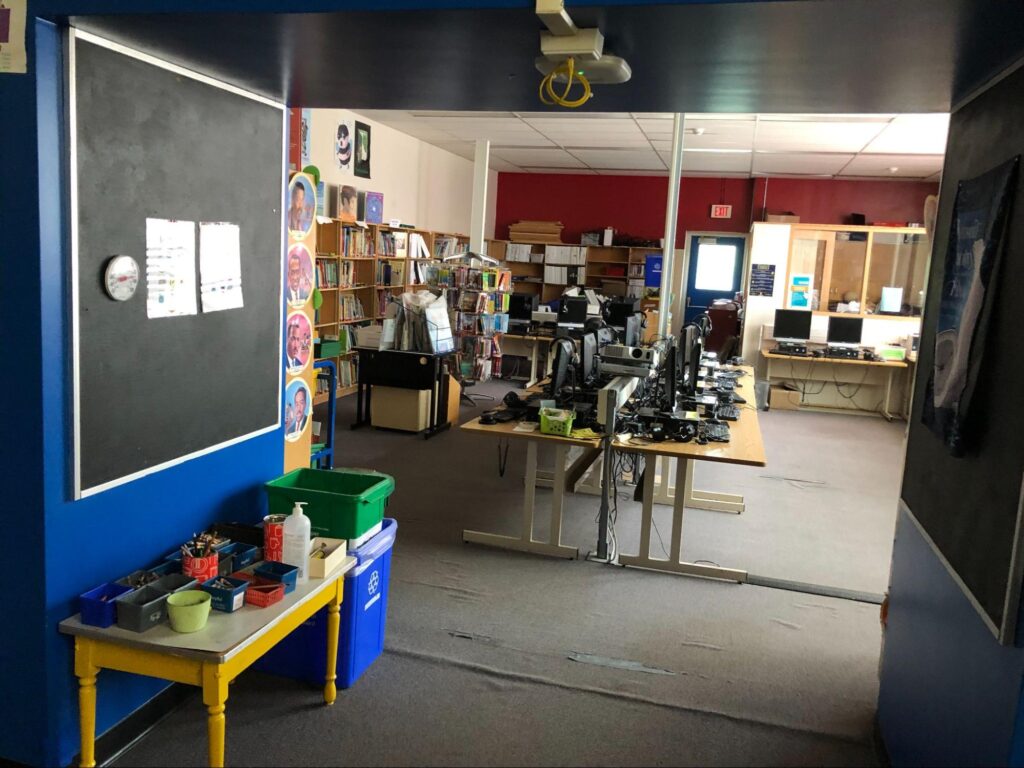
Before pictures of makerspace side of LLC
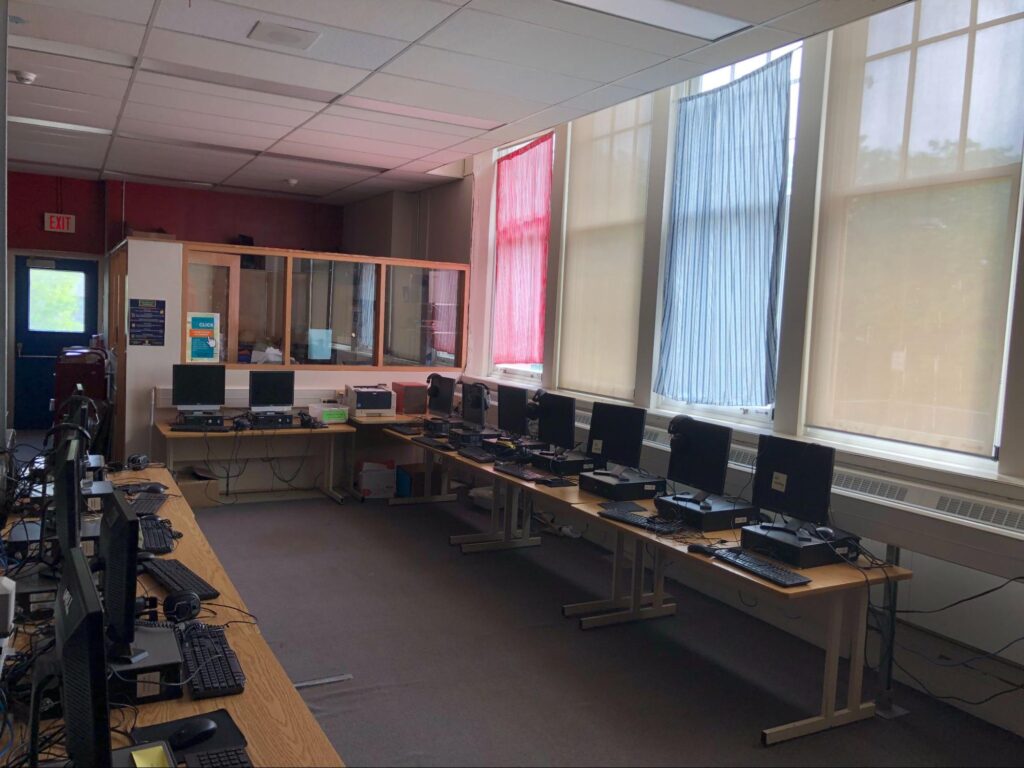
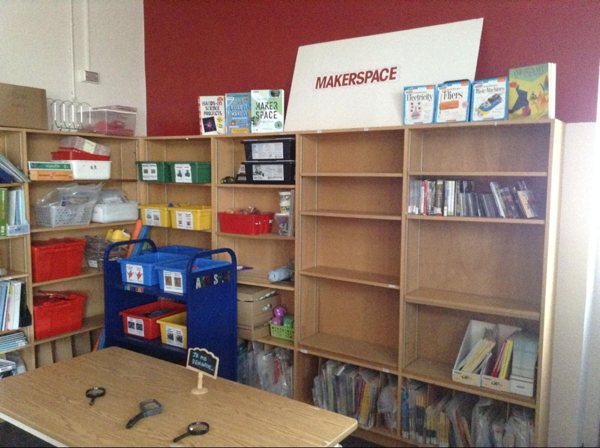
Makerspace beginnings
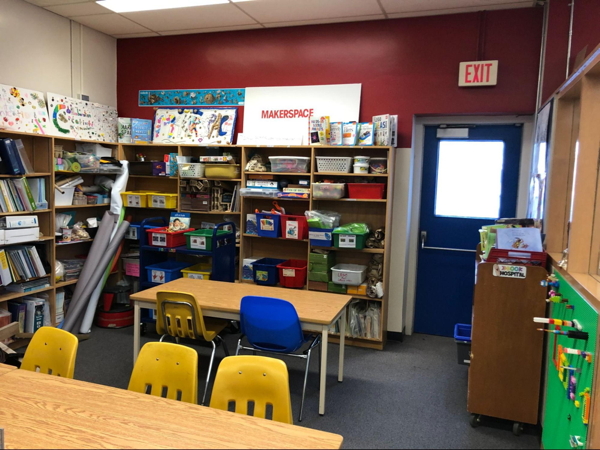
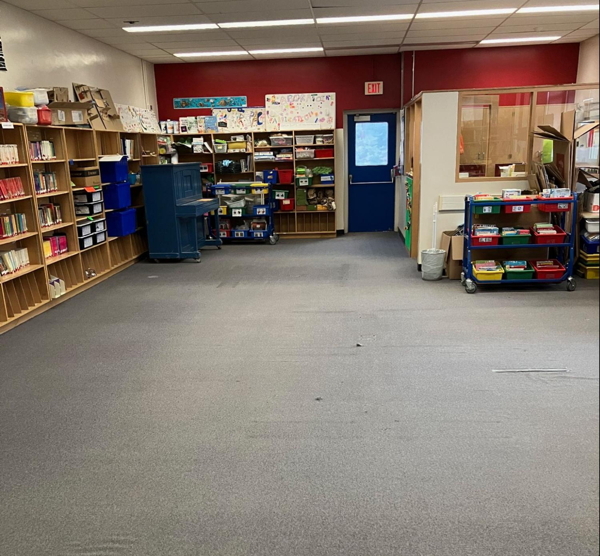
Collaborative Partnerships and Maker Culture
Once I established our “starter” makerspace, the next steps were to build on and establish a culture of collaborative learning and making. The drive to collaborate already existed in the school, but my role as a TL in our newly reopened LLC was to help facilitate it. I did so by sending out partnership surveys to teachers to gauge their areas of interest, and I encouraged them to sign up for a round of partnering. I offer three rounds per school year. I found that over time more teachers wished to partner with me. Many teachers wanted to extend what they were doing in the classroom on a larger scale, as well as build on their own capacity in certain areas (e.g., STEM skills, coding, robotics). As our LLC and makerspace continued to grow and evolve on the continuum, open-inquiry STEM stations became a first step in the collaborative partnership process. At the beginning of each term and partnership round, I’d invite students to explore open-inquiry STEM stations and materials with an inquiry provocation and prompt to explore while the homeroom teacher and I co-planned and mapped out long range collaborative partnerships. This became the most effective way to plan out our collaborative journey (and a great introduction to the makerspace for the students) as my prep periods didn’t always coincide with the other teachers, and release time is hard to come by. We could stand back and watch the inquiry take place but also find time to map out our long range collaborative projects. These open STEM stations allowed students to build on global competencies such as problem-solving, critical thinking, collaboration, and creativity. Some examples of recent collaborative projects that we co-planned during this time include: Global Read Aloud projects with global partners; community based projects with a maker focus (e.g.,loose parts, structure building) stemmed from the read-aloud Africville by Shauntay Grant; robotic-based projects (e.g,. STEM skills and life systems habitat-making with Ozobots–more on this later).
Over the years, and as we continued to evolve on the Leading Learning continuum: STEM stations for co-planning purposes became an LLC/makerspace norm. During my first year in the role as TL, and thanks to my supportive administrators, we were able to get on the list for a library revitalization project. Less than a year later, the renovations started during the winter. The revitalization included the new LLC layout which was reconfigured with the support of an interior designer, admin, the library services team, and my input as TL. We now have a fiction and a nonfiction side to the library, as opposed to the English and French section. Where English ends on the fiction side of the library, French begins, same thing on the nonfiction side. The makerspace is on the inquiry/nonfiction side of the library and now has its very own delineation with laminate on the ground to distinguish from the new multi-coloured carpet tiles. Our fully-fledged makerspace has moveable whiteboard tables, a café corner with stools, chromebooks, robotics, and STEM tubs all within easy access. When discussing LLC and makerspace design with Trevor Mackenzie, he states:
When we tinker with the design of the space, we really do see our students in a different light so it’s more than just a fancy pretty space, it’s actually thinking about the learning needs of our scholars and how we could be more mindful and even curious ourselves in how design can impact learning.
(Mackenzie, December 2023)
The new LLC layout and makerspace was designed from a Universal Design for Learning (UDL) approach where everything is easily accessible to all students and the layout is flexible in order to teach in the way students learn. In my conversations with Trevor, he also went on to explain that he cannot see certain skills emerge in students when all that is happening in a learning space is explicit teaching. He points out that collaboration, curiosity, and creativity cannot be explicitly taught. It can be discussed but not taught. However, if educators create those conditions by tinkering with the design of the space, skills such as collaboration and creativity start to “bubble up” in our students. All furniture in our new LLC is moveable including the comfortable rectangular benches and single square seats. They can be rearranged to fit the students’ learning needs or classrooms’ purpose. This also ties into some of Trevor’s thoughts around empowered inquiry spaces inspired by the Australian educational consultant David Thornburg. Thornburg wrote about the four design archetypes that Trevor witnessed in schools in Sydney, Australia. He observed that every classroom had posters of these four design archetypes to scaffold students’ understanding of them. These archetypes enabled students to take ownership over their flexible furniture. For example, one archetype was called the watering hole. Students in the watering hole worked loudly and collaboratively. Another archetype was called the cave which was for reflection, introspection, and quiet learning. Students could shift the furniture to meet their learning needs. These archetypes also helped students pinpoint their unique learning styles, needs, and strengths.
Classes can still come in to do book exchange while partnerships take place on the makerspace side of our newly renovated LLC. Students can move things around to meet their needs as all furniture is moveable including the circulation desk, shelves and seating. Again, it is important that students take ownership over the flexible furniture and their learning spaces. Trevor and I discussed the flipside of not sharing ownership over flexible furniture. If we empower our students to take ownership over their learning and space, it can be transformative for student learning. When we don’t share ownership, these elements (such as flexible furniture) are wasted, and student learning is stifled.
As a recently established/leading learning LLC and makerspace, we are continuously growing and evolving, as well as shifting our practice. The continuum (as the name implies) is a transforming and evolving process.
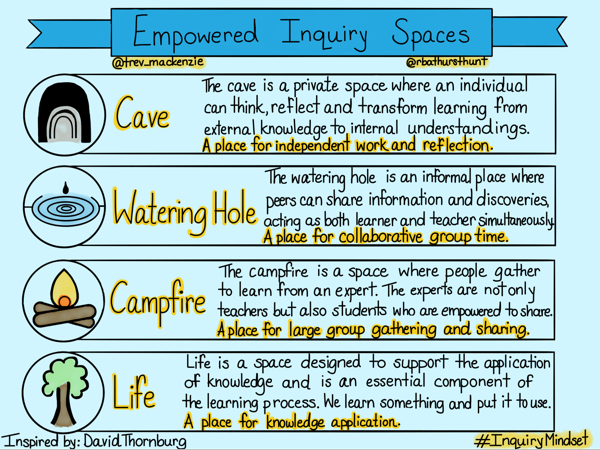
Collaborative Partnership in Makerspace Side of LLC: Ozobot-Animal Project through Engineer Design Thinking
For this article, I’ve decided to highlight an Engineer Design Thinking based inquiry project which touches on cross curricular content (science and math) and utilizes a lot of what our makerspace has to offer. The project was inspired by an ozobot lesson on insects and insect habitats. Our ozobot animal STEM Skills/life systems and habitat making project is an example of a collaborative partnership that recently took place in our makerspace/inquiry side of our LLC. Students carried out research through the virtual library and inquiry side of the LLC to explore aspects of their animal, its habitat, and potential threats to the species. They worked in groups and followed the Engineer Design Thinking Process model, starting off with the ASK stage. They brainstormed in groups using the whiteboard tables and markers, asked questions about their animal, and researched the answers. These first steps of our project resonate with something Trevor underlined in our discussion which was that students who have the opportunity to go vertical in their learning, thrive. He says “…to go to a whiteboard, or glass surface, or to get their hands into something, to code, or to create, or to make, and all of a sudden, it’s more than engagement, it’s more than enjoyment, it’s that they are demonstrating certain outcomes that we weren’t seeing evidence of in a different design.” Students followed each stage of the engineer design thinking process by going on to IMAGINE and PLAN out their ozobot animal’s habitat, CREATE it in 3D, TEST out the coded pathways for the ozobots, and, in turn, IMPROVE on the code and habitat design if needed. The coded pathways had to mimic the movements of their animal and include a second pathway/interaction with their animal’s threat (predator, human intervention etc.). Students did a gallery move to discover each other’s 3D habitats and ozobot animals. Each group presented and shared their work. Each group went on to extend, and showcase their research and learning around their animal and habitat using Book Creator. This is just one example of an inquiry based long range project that takes place in our LLC’s makerspace. When I asked Trevor if he felt the Engineer Design Thinking process goes hand in hand with his definition of inquiry, he highlighted the concept of constructivism and shared his imagery of The Tree of Inquiry. He considers inquiry to be rooted in constructivism. Students are creating a culture of learning and building on a learning community through skills such as collaboration and problem-solving skills which are at the heart of inquiry and constructivism.
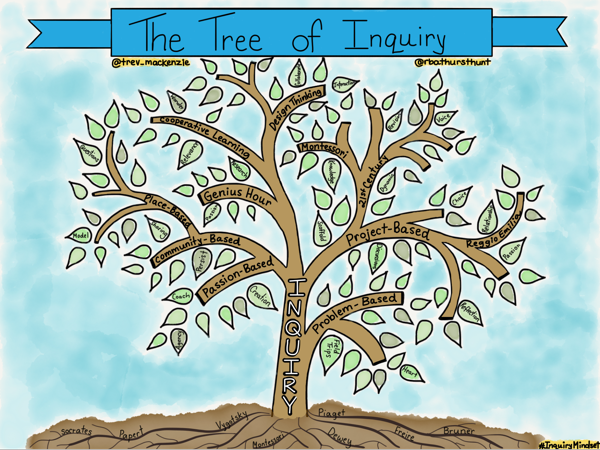
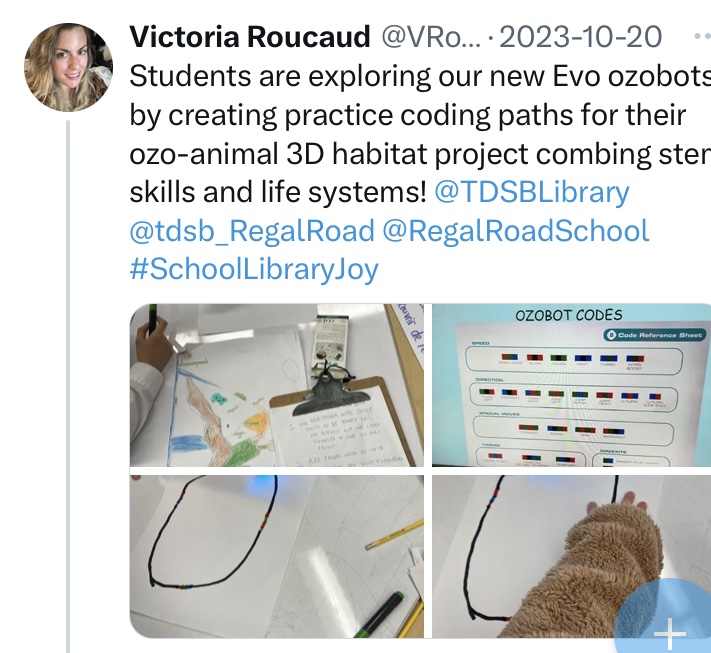
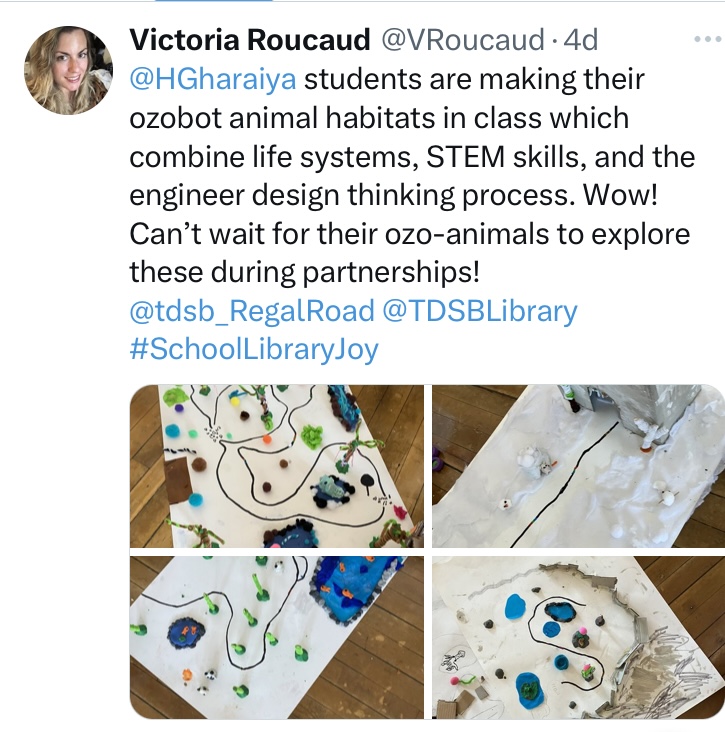
Collaborative partnership in our makerspace: STEM SKILLS and LIFE SYSTEMS through the Engineer Design Thinking Process
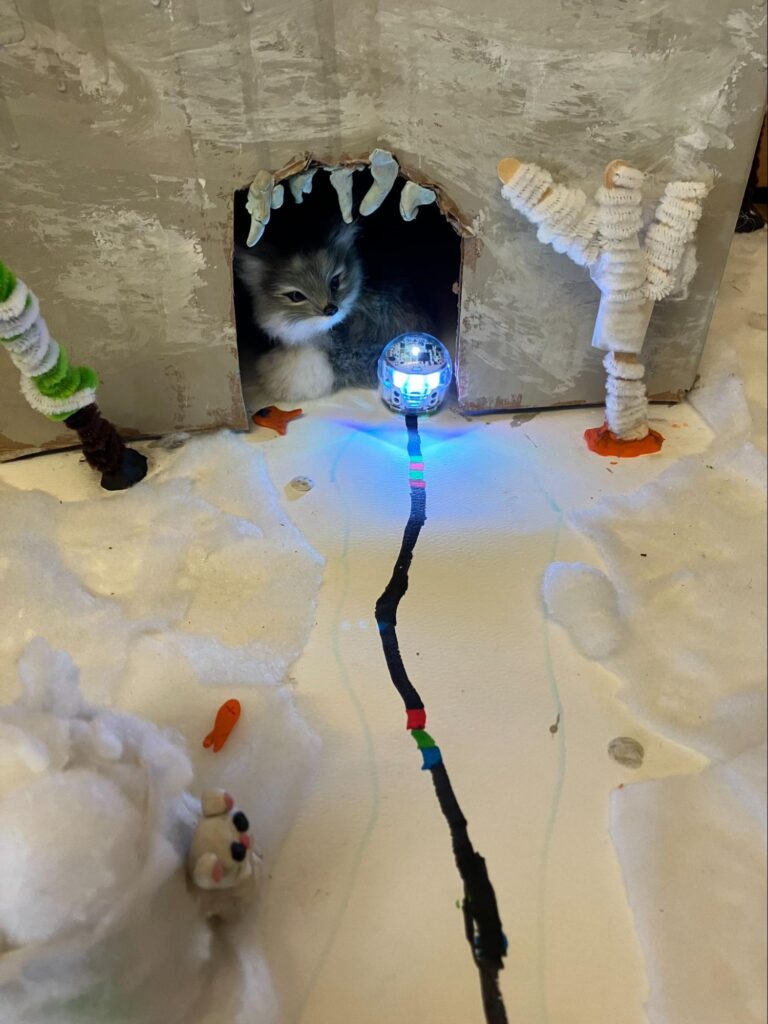
Tips for TLs Transforming an LLC Space / Starting Up a Makerspace
Enthusiasm and a clear vision is key. Relationship building and collaboration is at the heart of a teacher librarian role. Set yourself SMART goals and start with what is manageable in terms of creating a makerspace, and evolving from a library to a learning commons. Allocate a space for your makerspace. Start small and build on your makerspace using consumables, recyclables and donations. Don’t be afraid to ask for makerspace donations and consumables. A large part of my beginner makerspace was stocked with old crafts and supplies that parents/caregivers no longer needed and were happy to part with. Once you have some budget, prioritize the purchase of tools that will have longevity for your makerspace and STEAM projects. Promote what is happening in your LLC and makerspace. That will help pique interest and boost maker culture in your school. To boost the maker culture in our school, I shared what we were learning, making, doing with the school community at large through an LLC website, my PLN, and the weekly newsletter. This helped keep the makerspace, maker culture, and LLC an integral part of the school. It was also helpful to showcase what I partnered on with teachers to give others an idea of what these collaborative projects involved. I did so by sharing slides at the end of each partnering round. Having a self-sufficient/self-run LLC in terms of book exchange was another major factor in achieving balance, and opening up more time and space for collaboration in our makerspace. At the start of every school year, I run a book exchange and LLC norms review and orientation. This helps to set up teacher and student-led book exchange, and opens up more partnering slots in the LLC as well. Teacher and student-led book exchange has now become a norm in our school, as have collaborative partnerships and inquiry based STEAM projects in our makerspace. Establish an LLC committee, reach out to your administrators for support, share your vision for the school community with your administrators and parent council. As Trevor Mackenzie put it, schools that show interest in student agency, curiosity, active and relevant learning, and that invest in makerspaces notice that it “ends up being oxygen to the fire.” Teachers start to see their students in a new light as they engage in their learning in new and exciting ways.
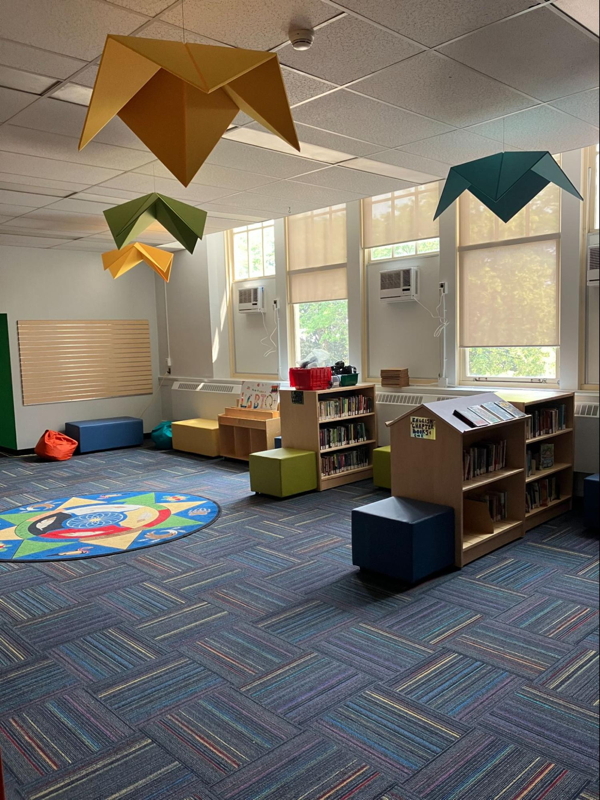
Our current LLC and makerspace
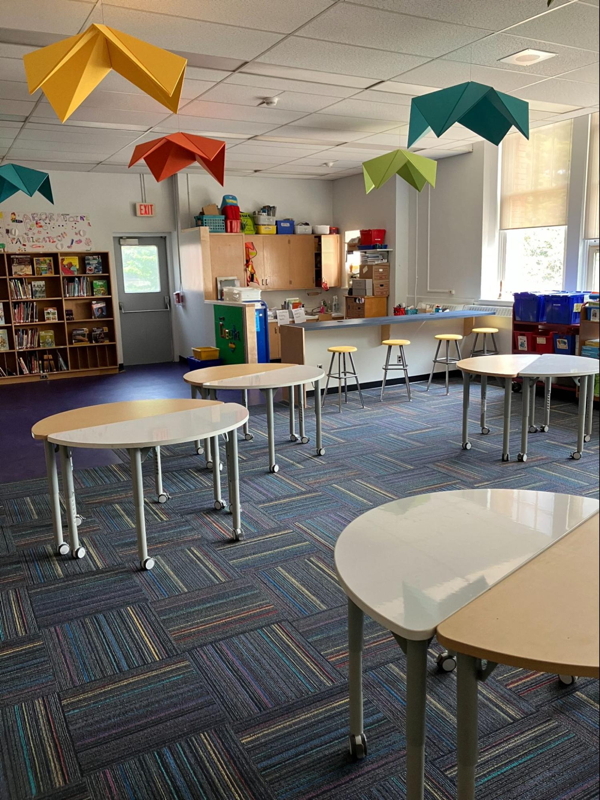
Conclusion
The LLC and makerspace is continuously evolving. Currently there are always two classes in the library: one doing teacher and student-led book exchange, and the other doing collaborative partnerships in the makerspace and inquiry side of the LLC. My hope is that the makerspace will become self-sufficient and student/teacher-led outside of partnerships as well. I want it to become an LLC norm outside of teacher and student-led book exchange. When discussing what value LLCs have in terms of boosting a school’s maker culture, Trevor Mackenzie summed it up nicely:
It is of huge value, in part because when we talk about makerspace, underneath makerspace are particular values that are inquiry values, and you know, types of thinking, types of skills, and so when I say types of thinking, I mean mindset, right? Curiosity, creativity, critical thinking, and then the skills like collaboration, communication, perseverance, being tethered to something, and being resilient, so it’s critical (Mackenzie, December 2023).
A library should coexist as a learning commons where students develop global competencies such as collaboration, creativity, problem-solving and inquiry. Assigning a designated maker space, as well as nurturing a maker culture in your LLC is a great place to start. Over time, it will become its own ecosystem. It will intersperse between classroom and LLC, and branch out across your school’s community by taking on a life of its own.
Resources to Guide You
Mackenzie, T. (2018). Trevor Mackenzie. https://www.trevormackenzie.com/
Mackenzie. T. (2019). Dive into Inquiry: Amplify Learning and Empower Student Voice. Elevate Books Edu.
Mackenzie. T. (2021). Inquiry Mindset: Scaffolding a Partnership for Equity and Agency in Learning. Elevate Books Edu.
MacKenzie, T., & Bathurst-Hunt, R. (2018). Inquiry mindset: Nurturing the dreams, wonders, & curiosities of our youngest learners. Irvine, CA: EdTechTeam Press.
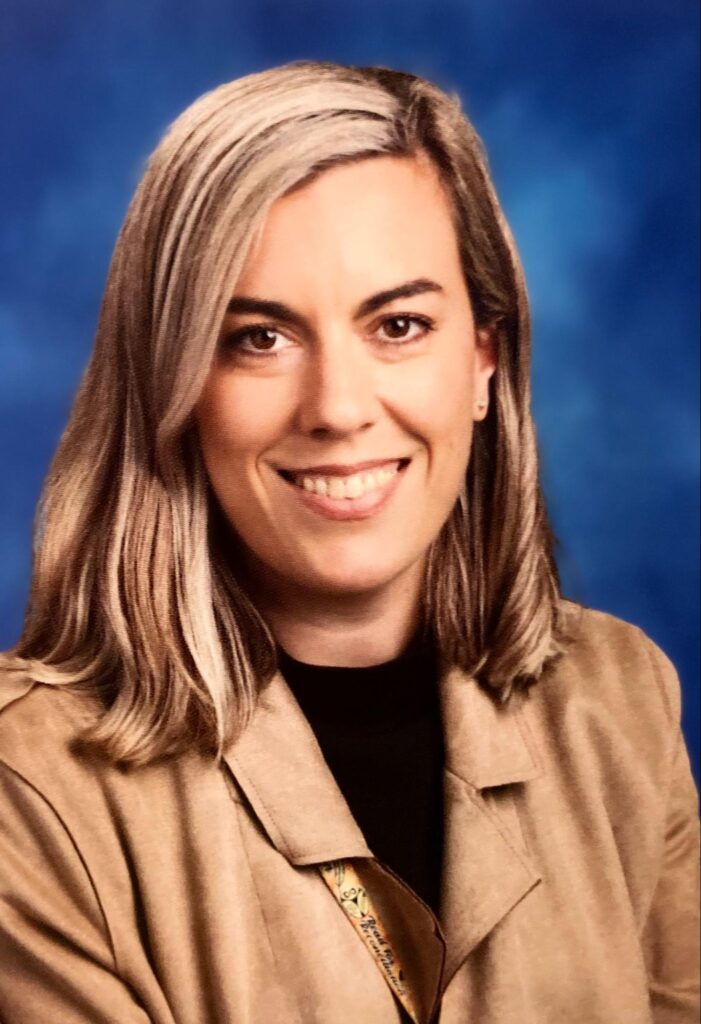
Victoria Roucaud is a teacher-librarian at the TDSB. She lives in Toronto with her husband and two children. She is passionate about the Library Learning Commons model and student-centered inquiry based learning through STEAM and collaborative makerspace projects. She regularly shares what students are reading, making, and doing on her LLC website’s latest news page, or through her social media PLN: @vroucaud.